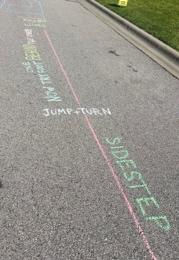Physical Therapy for Torticollis
- All Care Therapies

- Aug 13, 2020
- 2 min read
The Importance of Addressing Congenital Muscular Torticollis at an Early Age
Congenital Muscular Torticollis (CMT) is a common musculoskeletal disorder in infants that may become noticeable a few weeks after birth. There are three different types of CMT including: postural preference without range of motion restrictions, shortening of the sternocleidomastoid muscle (SCM) with range of motion restrictions, and in more severe cases, a mass or fibrotic thickening of the SCM which also cause range of motion restrictions. The term “torticollis” is Latin for “twisted neck” and it is characterized by a forced position of a head tilt to one side and head rotation to the opposite side. This persistent head positioning may lead to secondary complications such as developmental delays, facial asymmetries, and plagiocephaly (flattening of the skull).1,2
To decrease the long-lasting implications of this disorder and prevent further developmental delay, it is incredibly important to address CMT as soon as possible through conservative methods of treatment, such as physical therapy. Studies show that if physical therapy is started before 1 month of age, 98% of infants with CMT will achieve normal range of motion within 1.5 months, whereas those who waited until after 6 months of age to receive treatment experienced a longer duration of care with fewer infants achieving normal range of motion.2
Physical therapy not only improves passive and active neck range of motion, but it encourages symmetrical developmental activities to improve head, neck, upper extremity, and lower extremity positioning during play. Therapy sessions also include parent/caregiver education so that you can incorporate your infant’s treatment into your everyday activities!1
So, when addressing CMT, seek physical therapy early! The sooner we can correct your baby’s posture, the faster we see effective results!

References
DiIenno M. Orthopedic management. In: Tecklin JS, ed. Pediatric Physical Therapy. Philadelphia, PA: Lippincott Williams & Wilkins; 2015:475-476.
Kaplan SL, Coulter C, Sargent B. Physical therapy management of congenital muscular torticollis: A 2018 evidence-based clinical practice guideline from the APTA academy of pediatric physical therapy. Pediatric physical therapy. 2018;30(4):240-290. doi:10.1097/PEP.0000000000000544




Comments